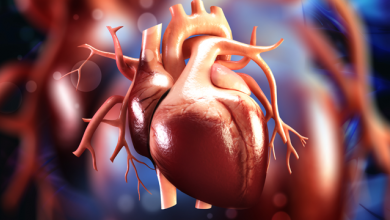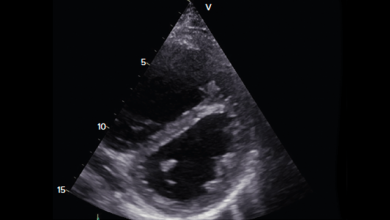Search results
Laura Redman
Job title: MBChB, FCS(SA), MMED, Cert Vascular Surgery
Author
Author(s):
Jonathan N Johnson
,
Frank Cetta
Added:
3 years ago
The last 60 years have seen significant changes in the care of congenital heart disease for both pediatric and adult patients. Increasing patient survival rates have widened the number and scope of potential patients seen by congenital cardiologists.1 These patients often undergo multiple surgeries, particularly since few lesions are truly ‘repaired.’ The majority of patients will have residua or…
View more
Author(s):
RJ Kanter
Added:
3 years ago
Introduction
Compared with patients with structurally normal hearts, there is an even greater need to suppress pathologic tachycardias in patients with congenital heart disease. The decrease in diastolic filling time and potential loss of atrioventricular (AV) synchrony are more poorly tolerated in these patients, proportionate to the degree of underlying systolic and diastolic dysfunction…
View more
Author(s):
Catherine R Weinberg
,
Amier Ahmad
,
Boyangzi Li
,
et al
Added:
3 years ago
Dyspnea, palpitations, edema, and fatigue are common symptoms during pregnancy. For women with congenital heart disease (CHD), it may be difficult to discern whether symptoms are due to normal pregnancy or underlying cardiac disease. Although most women with CHD tend to experience successful pregnancies, morbidity and mortality are significantly increased with more complex CHD lesions.1–6 Women…
View more
Author(s):
Jeffrey M Schussler
Added:
3 years ago
Cardiac computed tomography (CT), and in particular computed tomographic coronary angiography (CTCA), stand poised to revolutionize the way in which cardiac pathology is diagnosed, and change the way in which decisions are made with regards to invasive treatment of cardiac disease. In particular, the diagnosis of coronary disease (the number one killer of patients in modern societies) will be…
View more
Author(s):
Nico A Blom
Added:
3 years ago
Cardiac resynchronization therapy (CRT) using biventricular pacing has been proven to be effective in adult patients with left ventricular (LV) systolic dysfunction and QRS prolongation. In this group of patients, CRT improves exercise tolerance, symptoms of heart failure and all-cause mortality.1 In addition, there is growing evidence that inter- and intra-ventricular dyssynchrony induced by…
View more
Author(s):
Duraisamy Balaguru
,
Rajiv Verma
Added:
3 years ago
Surgical repair has been the cornerstone of treatment for congenital heart diseases (CHD). However, cardiac catheterization has evolved from being a diagnostic modality to a therapeutic one in the past four decades. Application of catheter-based therapy has become the standard of care for some congenital heart defects, thus obviating surgery. This review will discuss congenital heart defects that…
View more
Author(s):
Shubhayan Sanatani
Added:
3 years ago
In children and young adults, sudden cardiac death (SCD) occurs in approximately 1-2 per 100,000 population.1,2 While the overwhelming majority of occurrences of SCD occur in the adult population and are due to ischemic heart disease, very few cases in a pediatric population are. Pediatric SCD is a relatively uncommon occurrence whose underlying etiology often remains elusive. A long list of…
View more
Author(s):
Jose Luis Zamorano
Added:
3 years ago
2D echocardiography (2DE) is a common diagnostic and treatment planning tool in clinical cardiology, especially for the assessment of left ventricular (LV) volume and function. However, traditional 2DE is severely limited by its dependence on geometrical assumptions, which can lead to inaccuracies in volume quantification.1 Because 3D echocardiographic (3DE) imaging eliminates geometrical…
View more
Author(s):
Angelos Tsipis
,
Evdokia Petropoulou
Added:
2 years ago












